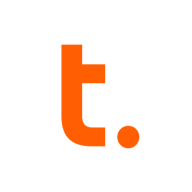

Teradata and Dataloader.io are competing in the data management space. Teradata appears to have an advantage in handling complex analytics and large-scale data environments.
Features: Teradata offers robust scalability, extensive analytics capabilities, and strong performance in managing large datasets. Dataloader.io provides ease of integration with Salesforce, simplified data migration, and user-friendly setup.
Ease of Deployment and Customer Service: Dataloader.io utilizes a cloud-based deployment model requiring minimal setup and includes reliable customer support. Teradata generally involves a more complex deployment process suited for organizations with existing IT infrastructure, providing high levels of support.
Pricing and ROI: Teradata's setup involves higher initial costs due to infrastructure needs, yet it can deliver substantial ROI for businesses requiring extensive analytical capabilities. Dataloader.io offers a cost-effective solution with lower upfront expenses, appealing to businesses needing quick and budget-friendly data integrations.


Dataloader.io is the data loader for Salesforce. Use the most popular data loader for Salesforce to quickly and securely import, export and delete unlimited amounts of data for your enterprise. Get started quickly with our simple, 100% cloud solution.
Teradata is a scalable data analytics platform designed to meet enterprise demands for large-scale data management and processing, focusing on performance, scalability, and security for complex query executions.
As a leading data warehousing solution, Teradata integrates advanced analytics enabling organizations to derive insights from massive datasets. It supports high-volume data workloads with its architecture optimized for analytical queries. Users benefit from its robust scalability, allowing seamless expansion as data grows. Teradata's SQL engine is compatible with a wide range of data types, ensuring flexibility in data analysis. With advanced security measures, it protects sensitive data across various environments, providing peace of mind to users handling critical information.
What are the most important features of Teradata?Teradata is widely used in industries like finance, telecommunications, and healthcare, where data-driven decisions are critical. Companies leverage its robust analytics capabilities to enhance customer experiences, streamline operations, and ensure compliance with regulatory requirements. In these sectors, quick access to data insights can significantly impact competitive advantage.
We monitor all Data Integration reviews to prevent fraudulent reviews and keep review quality high. We do not post reviews by company employees or direct competitors. We validate each review for authenticity via cross-reference with LinkedIn, and personal follow-up with the reviewer when necessary.